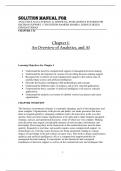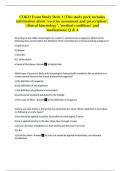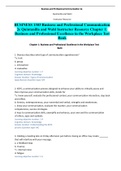Exam (elaborations)
Solution Manual For Analytics, Data Science, & Artificial Intelligence Systems for Decision Support, 11th Edition by Ramesh Sharda, Dursun Delen, Efraim Turban Chapter 1-14
Solution Manual For Analytics, Data Science, & Artificial Intelligence Systems for Decision Support, 11th Edition by Ramesh Sharda, Dursun Delen, Efraim Turban Chapter 1-14
[Show more]












